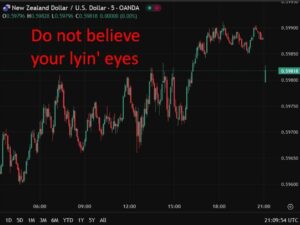Forex Economic Calendar Overview: Key Events for the Next Trading Week (25.08.2025–31.08.2025)

The market remains highly volatile amid ongoing trade wars initiated by the US administration and geopolitical events.
In the upcoming week of August 25–31, 2025, market participants will focus on the release of important macroeconomic statistics from Australia, Switzerland, the US, Japan, Canada, and Germany.
Investors will pay close attention to Friday’s release of the US core PCE price index, which the Fed uses as its main gauge of inflation.
Note: During the coming week, new events may be added to the calendar, and/or some scheduled events may be canceled. GMT time
The article covers the following subjects:
Major Takeaways
- Monday: no important macroeconomic statistics are scheduled.
- Tuesday: Minutes of the August RBA meeting, US CB consumer confidence index
- Wednesday: Australian CPI
- Thursday: Switzerland’s GDP, US GDP, Japanese CPIs
- Friday: German retail sales, German CPIs, Canadian GDP, US PCE
- Key event of the week: US PCE
Monday, August 25
A Summer Bank Holiday takes place in the UK. No important macroeconomic statistics are scheduled for release. Trading volume will be lower than usual.
Tuesday, August 26
01:30 – AUD: Reserve Bank of Australia Meeting Minutes
The document is published two weeks after the meeting and the interest rate decision. If the RBA is optimistic about the country’s labor market and GDP growth rate and is hawkish on the inflation outlook, the rate may be increased at the next meeting, which is favorable for the Australian dollar. The bank’s dovish rhetoric on inflation, in particular, is putting pressure on the Australian dollar.
At the August 2025 meeting, the RBA decreased the interest rate by 0.25% to 3.60%. This move represents a shift away from the 12-year high of 4.35%, as the bank pointed to declining inflationary pressures and global uncertainties. This rate is now at its lowest since 2023.
At the conclusion of the August meeting, RBA governor Michele Bullock stated rates may need to be lowered to achieve price stability, and forward-looking monetary policy implies that the RBA can continue to lower rates.
Bullock has also previously supported a strategy of “cautious easing.”
If the released minutes contain unexpected information regarding the RBA’s monetary policy issues, the volatility in the Australian dollar will increase.
14:00 – USD: Consumer Confidence Index
A Conference Board’s survey of nearly 3,000 US households evaluates current and future economic conditions and overall economic sentiment. Consumer confidence in the country’s economic development and stability is a key indicator of consumer spending and, consequently, economic performance. High confidence levels suggest economic growth, while low levels indicate stagnation.
Previous indicator values: 97.2, 93.0, 98.0, 86.0, 92.9, 98.3, 104.1 in January 2025, 104.7 in December 2024, 111.7, 108.7, 98.7, 103.3, 100.3, 100.4, 102.0, 97.0, 104.7, 106.7, 114.8, 110.7, 102.0, 102.6, 103.0, 106.1, 117.0, 109.7, 102.3, 101.3, 104.2.
The increase in the indicator values will bolster the US dollar exchange rate, while the decrease will weaken it.
Wednesday, August 27
01:30 – AUD: Consumer Price Index
The Consumer Price Inflation Index, published by the Reserve Bank of Australia and the Australian Bureau of Statistics, gauges retail prices of goods and services in Australia. The CPI is the most significant indicator of inflation and changes in consumer preferences. A high indicator reading is positive for the Australian dollar, while a low reading is negative.
Previous monthly values: +1.9% in June, +2.1% in May, +2.4% in April, March, and February, +2.5% in January 2025, +2.5% in December 2024, +2.3% in November, +2.1% in October and September, +2.7% in August 2024.
The Australian central bank’s CPI inflation target ranges between 2% and 3%. According to the minutes of a recent RBA Board meeting, the bank does not rule out further rate cuts, and the current forecasts assume a “couple” more rate cuts.
In Australia, inflation appears to be slowing down, sliding back into the target range of 2%–3%. The expected positive reading is likely to support the AUD. If the figure comes in worse than forecast, it will hurt the AUD in the short term.
Thursday, August 28
07:00 – CHF: Swiss GDP for Q2 2025
GDP is considered an indicator of the general state of a country’s economy, which measures its growth or decline rate. The GDP report represents the total monetary value of all final goods and services produced by Switzerland over a given period. A rising trend of the GDP indicator is considered positive for the Swiss franc, while a low result is considered negative.
Previous values: +0.5% (+2.0% YoY) in Q1 2025, +0.2% (+1.5% YoY) in Q4 2024, +0.4% (+2.0% YoY) in Q3, +0.7% (+1.8% YoY) in Q2, +0.5% (+0.6% YoY) in Q1, +0.3% (+0.6% YoY) in Q4 2023, +0.3% (+0.3% YoY) in Q3, 0% (+0.5% YoY) in Q2, +0.3% (+0.6% YoY) in Q1 2023.
The data indicates that the Swiss economy is recovering, albeit still at a slow pace, which is a positive factor for the Swiss franc.
If the data prove to be lower than forecast, the Swiss franc may decline in the short term. However, the currency will not fall sharply, as it is in strong demand as a defensive asset. Better-than-forecast data may strengthen the franc in the short term.
12:30 – USD: US GDP Annual Growth Rate for Q2 (Second Estimate). Personal Consumption Expenditures (Core PCE Price Index)
The GDP data is one of the key indicators, along with labor market and inflation data, for the US Fed in terms of its monetary policy. A positive indicator reading strengthens the US dollar, while a weak GDP report is harmful for the currency. In Q1 2025, GDP declined by -0.5%, after gaining +2.4% in Q4 2024, +3.1% in Q3, +3.0% in Q2, +1.6% in Q1 2024, +3.2% in Q4 2023, +4.4%, +2.4% in Q2, +2.8% in Q1 2023.
If the data indicate a decline in GDP in Q2 2025, the US dollar will face significant pressure. Conversely, positive GDP figures will bolster the greenback and US stock indices.
The preliminary and second estimates stood at +3.0%.
The Personal Consumption Expenditures (PCE) data reflect the average amount of money consumers spend per month on durable goods, consumer goods, and services. The core PCE price index excludes food and energy prices. The annual core PCE is the main inflation gauge used by the US Fed as the primary inflation indicator.
The inflation rate, along with the labor market and GDP data, is crucial for the Fed in determining its monetary policy. Growing prices exert pressure on the central bank to tighten its policy and raise interest rates.
The PCE data above the forecasted and/or previous values may boost the US dollar, while a decline in the reading will likely exert a negative impact on the greenback.
Previous quarterly values: +3.5%, +2.6% in Q4 2024.
The preliminary estimate stood at +2.5%.
23:30 – JPY: Tokyo Consumer Price Index (CPI). Tokyo Core CPI excluding Food and Energy
Tokyo’s consumer price indexes, published by the Statistics Bureau of Japan, gauge the price change of a selected basket of goods and services over a given period. These indexes are key indicators for assessing inflation and consumer preferences.
Previous values YoY:
- Tokyo CPI: +2.9%, +3.1%, +3.4%, +3.5%, +2.9%, +2.9%, +3.4%,+3.1%, +2.6%, +1.8%, +2.1%, +2.6%, 2.2%, +2.3%, +2.2%, +1.8%, +2.6%, +2.5%, +1.8%, +2.4%, +2.6%, +3.3%, +2.8%, +2.9%, +3.2%, +3.2%, +3.2%, +3.5%, +3.3%, + 3.4%, +4.4% in January 2023;
- Tokyo CPI excluding food and energy: +3.1%, +3.1%, +2.1%, +2.0%, +1.1%, +2.2%, +2.5%, +2.4%, +2.2%, +1.8%, +1.6%, +1.6%, +1.5%, +1.8%, +2.2%, +1.8%, +2.9%, +3.1%, +3.3%, +3.5%, +3.6%, +3.8%, +4.0%, +4.0%, +4.0%, +3.8%, +3.9%, +3.8%, +3.4%, +3.1%, +3.0% in January 2023.
The indicator reading lower than forecasted and/or previous values may weaken the yen, while a rise in the indicator may strengthen the currency.
Friday, August 29
06:00 – EUR: German Retail Sales
Retail sales are the main indicator of consumer spending in Germany. A high indicator reading boosts the euro, while a low one weakens the currency.
Previous values: +1.0% (+4.9% YoY), -1.6% (+1.6% YoY), -1.1% (+2.3% YoY), -0.2% (+2.2% YoY), +0.8% (+4.9% YoY), +0.2% (+2.9% YoY), -1.6% (+1.8 YoY) in January 2025, -0.6% (+2.5% YoY), -1,5% (+1,0% YoY), +1.2% (+3.8% YoY), +1.6 (+2.1% YoY), -1.2% (-0.6% YoY), +2.6% (-1.9% YoY), -1.5% (+2.2% YoY), -0.3% (-.2% YoY) in January 2024.
The data suggests that the German economy’s recovery has been uneven, with some months experiencing a slowdown. Indicator readings higher than forecasted and/or previous values are likely positive for the euro in the short term.
12:00 – EUR: German Harmonized Index of Consumer Prices (Preliminary Estimate)
The Harmonized Index of Consumer Prices (HICP) is published by the European Statistics and is calculated using a methodology agreed upon by all EU countries. The HICP is an indicator for measuring inflation and is used by the European Central Bank to assess price stability. A positive index result strengthens the euro, while a negative one weakens it.
Previous values YoY: +1.8%, +2.0%, +2.1%, +2.2%, +2.3%, +2.6%, +2.8% in January 2025, +2.6%, +2.8% in December 2024, +2.4%, +2.4%, +1.8%, +2.0%, +2.6%, +2.5%, +2.8%, +2.4%, +2.3%, +2.7%, +3.1% in January 2024, +3.8% in December, +2.3% in November, +3.0% in October, +4.3% in September, +6.4% in August, +6.5% in July, +6.8% in June, +6.3% in May, +7.6% in April, +7.8% in March, +9.3% in February, +9,2% in January, +9.6% in December, +11.3% in November, +11.6% in October, +10.9% in September, +8.8% in August, +8.5% in July, +8.2% in June, +8.7% in May, +7.8% in April, +7.6% in March, +5.5% in February, +5.1% in January 2022.
The data indicates a slower pace of inflation in Germany, which in turn is forcing the ECB to ease its monetary policy, especially given the risks of recession in the Eurozone.
Figures lower than the previous reading will likely affect the euro negatively. Conversely, the resumption of inflation growth may provoke the appreciation of the euro.
If the August data turns out to be better than previous values, the euro may strengthen in the short term.
12:30 – CAD: Canadian GDP. Canada’s Annual GDP Growth
The release of Canada’s GDP report by Statistics Canada. A positive report bolsters the Canadian dollar, while a weak GDP report negatively affects the currency.
Canada’s quarterly GDP report reflects the total volume of all goods and services produced by Canada during the quarter (YoY) and is considered an indicator of the overall Canadian economy. GDP gained +0.5% (+2.2% YoY) in Q1 2025, following growth of +0.6% (+2.6% YoY) in Q4 2024, +0.3% (+1.0% YoY), +0.5% (+2.1% YoY) in Q2, +0.4% (+1.7% YoY) in Q1 2024, +0.2% (+1.0% YoY) in Q4 2023, a decline of -0.3% (-1.1% YoY) in Q3, -0.2% in Q2, +2.6% growth in Q1 2023, zero growth in Q4, +2.9% growth in Q3 2022, +3.3% in Q2 2022, +3.1% in Q1 2022 (YoY).
If the Q2 2025 data is better than the previous and/or forecasted value, the Canadian dollar will strengthen.
12:30 – USD: Personal Consumption Expenditures (Core PCE Price Index)
The Personal Consumption Expenditures (PCE) data reflect the average amount of money consumers spend per month on durable goods, consumer goods, and services. The core PCE price index excludes food and energy prices. The annual core PCE is the main inflation gauge used by the US Fed as the primary inflation indicator.
The inflation rate, along with the labor market and GDP data, is crucial for the Fed in determining its monetary policy. Growing prices exert pressure on the central bank to tighten its policy and raise interest rates.
The PCE data above the forecasted and/or previous values may boost the US dollar, while a decline in the reading will likely exert a negative impact on the greenback.
Previous values YOY: +2.8%, +2.7%, +2.5%, +2.6%, +2.8%, +2.6% in January 2025, +2.8% in December 2024, +2.8%, +2.8%, +2.7%, +2.7%, +2.6%, +2.6%, +2.6%, +2.8%, +2.8%, +2.8%, +2.9% in January 2024, +2.9%, +3.2%, +3.5%, +3.7%, +3.8%, +4.3%, +4.3% +4.7%, +4.8%, +4.8%, +4.7%, +4.7%, +4.6%, +4.8%, +5.1%, +5.2%, +4.9%, +4.7%, +4.8%, +4.7%, +4.9%, +5.2%, +5.3%, +5.2% in January 2022.
Price chart of USDX in real time mode
The content of this article reflects the author’s opinion and does not necessarily reflect the official position of LiteFinance broker. The material published on this page is provided for informational purposes only and should not be considered as the provision of investment advice for the purposes of Directive 2014/65/EU.
According to copyright law, this article is considered intellectual property, which includes a prohibition on copying and distributing it without consent.






